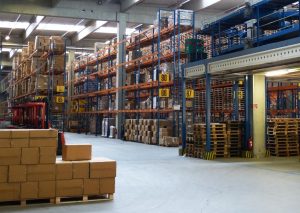I do not want to make you mine (deep sea mine, that is)
By Manuel Schneider, GreenChips

Manuel Schneider
In the Global E-waste Monitor 2020 it is stated that the total weight of Electrical and Electronic Equipment (EEE) consumption increases by 2.5 million metric tons (Mt) each year. The demand for electronics is steadily rising, but the minerals needed to manufacture the products are limited.
Natural deposits for minerals like copper and gold are decreasing and some estimates say that our current sources will only last 40 to 50 more years. This anticipated shortage could inhibit innovation and slow the growth of new technologies while making most EEE extremely costly. Now the question is, how can we satisfy the growing need of consumers for electronics, when we run out of resources?
 Some speculate that deep sea mining will be the future. Over 70% of Earth’s surface is covered in water, consequently a lot of potential minerals could be found beneath the oceans. However, the deepest deposits can be about 6,000 m below sea level. It is obvious that the mining of the resources at such depths proposes a challenge on its own. Aside from new technologies needed to extract the metals, it is a difficult task to ensure that it is done in a responsible and sustainable way. Seabed mining poses a threat to the fragile ecosystem, which already faces enough challenges with marine pollution and ocean warming. This is a complicated task, but it is still in the realm of possibility. Even so, our goal should be to find more environmentally friendly ways to get the minerals needed for electronics.
Some speculate that deep sea mining will be the future. Over 70% of Earth’s surface is covered in water, consequently a lot of potential minerals could be found beneath the oceans. However, the deepest deposits can be about 6,000 m below sea level. It is obvious that the mining of the resources at such depths proposes a challenge on its own. Aside from new technologies needed to extract the metals, it is a difficult task to ensure that it is done in a responsible and sustainable way. Seabed mining poses a threat to the fragile ecosystem, which already faces enough challenges with marine pollution and ocean warming. This is a complicated task, but it is still in the realm of possibility. Even so, our goal should be to find more environmentally friendly ways to get the minerals needed for electronics.
The growing demand of electronic equipment also means more electronic waste. Therefore, another alternative that is becoming more and more attractive is urban mining. With 53.6 Mt of e-waste generated worldwide in 2019, a lot of valuable materials end up in landfills. A different alternative to scrapping those products is recycling, or urban mining as it is called in this case. Unfortunately, the recycling rates are low, and a lot of the global e-waste flow is still not documented. According to the Global E-waste Monitor Europe recycles the most with a rate of 42.5%, followed by Asia (11.7%), America (9.4%), Oceania (8.8%) and lastly Africa (0.9%). Those alarmingly low numbers show the “economic stupidity”, as Achim Steiner, then Executive Director of the UN Environment Programme (UNEP), put it in 2015.
According to the study the value of selected raw materials contained in e- waste in 2019 was approximately $57 billion USD.
 Although there is a lot of potential in urban mining, a lot of middle- and low-income countries still have no fully developed e-waste management infrastructure. In many places the majority of electrical waste is processed by the informal sector. Thus, some resources are re-introduced into the supply chain, but the processing of these materials happens under inferior conditions, causing severe harm to the worker’s health and the environment. The informal sector often lacks the appropriate equipment to expose of hazardous chemicals, causing adverse health effects to workers and even their children. From 2017 to 2019 another nine countries introduced e-waste policies and thereby 71% of the population is covered by either legislation, policy, or regulation. This shows that it is still a step in the right direction of a circular economy instead of a linear one. Obviously, broken electronics should be recycled, but what about all the electronic parts that get dumped into landfills and were never used in production?
Although there is a lot of potential in urban mining, a lot of middle- and low-income countries still have no fully developed e-waste management infrastructure. In many places the majority of electrical waste is processed by the informal sector. Thus, some resources are re-introduced into the supply chain, but the processing of these materials happens under inferior conditions, causing severe harm to the worker’s health and the environment. The informal sector often lacks the appropriate equipment to expose of hazardous chemicals, causing adverse health effects to workers and even their children. From 2017 to 2019 another nine countries introduced e-waste policies and thereby 71% of the population is covered by either legislation, policy, or regulation. This shows that it is still a step in the right direction of a circular economy instead of a linear one. Obviously, broken electronics should be recycled, but what about all the electronic parts that get dumped into landfills and were never used in production?
Dead stock is a big problem considering the economic use of resources, especially in the semiconductor market. Still, most of those electronic parts are perfectly fine to use, so calling them dead is an exaggeration. As is often the case, this “problem” is an opportunity in disguise. Instead of looking at the bottom of the ocean or digging through landfills to find materials, we should search warehouses for usable parts. The challenging part is to establish a connection between sellers and potential buyers. Fortunately, there are many excess stock platforms online. Websites like GreenChips.com for example even specialize in environmental protection, while providing a platform where anyone can search for parts or list their excess semiconductors.
 It is important to think about future ways to secure a steady supply chain of resources, especially when they are finite like the metals used in EEE. For the industry to develop a circular economy we should focus first on using all the resources already available on the market. Electronic components are in high demand after 2020’s pandemic; doesn’t this seem like the perfect opportunity to clear out warehouses? A lot of industry professionals call for a modernized supply chain, which means excess stock platforms will grow in popularity. Before we start calling for more, like a cat sitting in front of a half full feeding dish, we should eat what is already served.
It is important to think about future ways to secure a steady supply chain of resources, especially when they are finite like the metals used in EEE. For the industry to develop a circular economy we should focus first on using all the resources already available on the market. Electronic components are in high demand after 2020’s pandemic; doesn’t this seem like the perfect opportunity to clear out warehouses? A lot of industry professionals call for a modernized supply chain, which means excess stock platforms will grow in popularity. Before we start calling for more, like a cat sitting in front of a half full feeding dish, we should eat what is already served.
Manuel Schneider is a Content Marketing Manager at GreenChips, which is an excess stock platform with a huge focus on sustainability. With a background in corporate communications and a passion for nature he supports GreenChips’ mission to save resources. Manuel researches and writes content relating to the semiconductor industry and environmental concerns. He has worked with GreenChips since the beginning and wants to aid them by implementing this paradigm shift.










